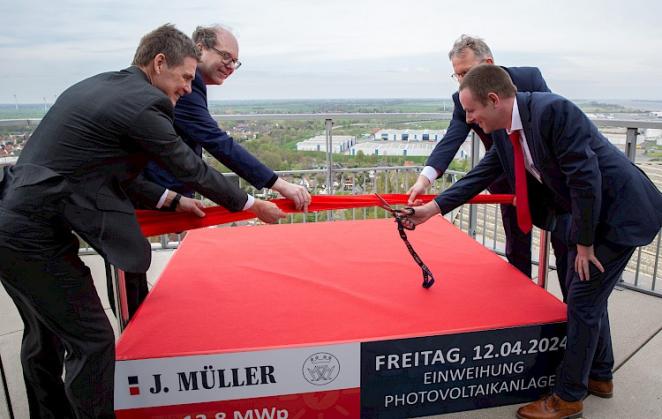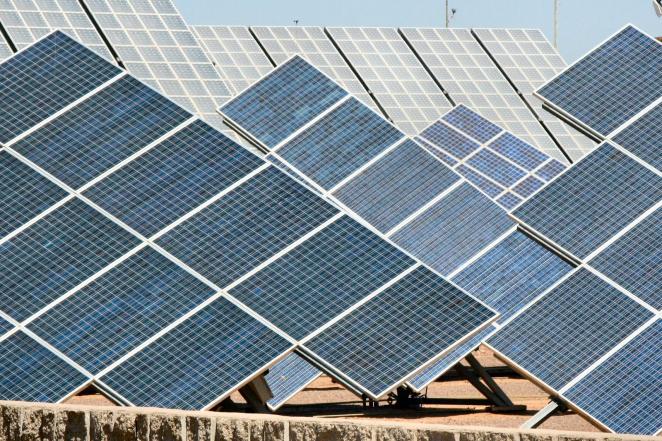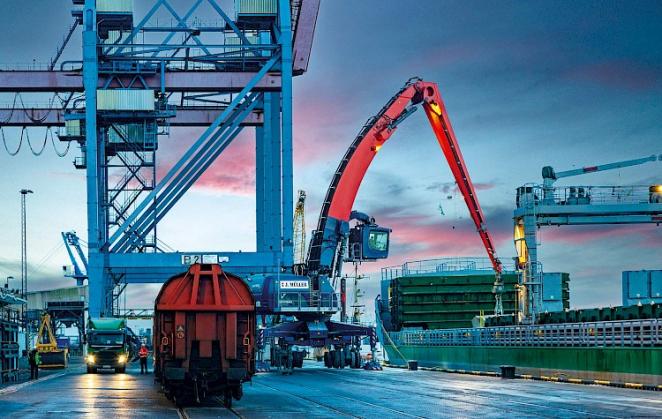Our GRITH partners from Wesermarsch in Germany have just shared some great news in terms of energy transition on industrial sites in their region. On 12th April 2024 a significant milestone was marked in the sustainable energy supply of Lower Saxony with the ceremonial inauguration of the largest rooftop solar system in the region by the J. Müller Group at the company’s seaport location in Brake. That is certainly something worth celebrating!

Official inauguration of huge PV system by J.Mueller at seaport Brake
Impressive PV system
The J. Müller Group offers highly specialised port services and state-of-the-art infrastructure to facilitate optimal transport and logistics solutions. The company’s new photovoltaic(PV) system comprises a total of 10 hall roofs with a total area of 62,100 m² and a PV output of 12.8 MWp. It generates a solar yield of 959 kWh, thereby avoiding 5,804,000 kg of CO₂ emissions per year. The energy generated could supply around 3,400 households with electricity per year. Those are impressive figures.

Brake as green port
The event was attended by many high-ranking officials, including Lower Saxony's Energy Minister Christian Meyer, who emphasized the great importance of this project. “All efforts to transform the seaport of Brake into a ‘green port’ will positively impactthe climate and environment,” said Minister Meyerin his welcoming address. I am, therefore, delighted to see such a powerful and large PV system.” The J. Müller Group now produces more than 30% of its own electricity needs.
Photovoltaics is an important part of our energy transition
Photo: Martin Bolte
Huge potential for solar systems
Lower Saxony is increasingly becoming a photovoltaic state,shown by the record growth in 2023 with an installed capacity of over 1,400 megawatts, double the previous year. Businesses have a very important role in this, as the example of the J. Müller Group shows. Our GRITH project partner, Tobias Busch of Wirtschaftsförderung Wesermarsch GmbH (Dept. of Economic Development) explains some more: “The potential for solar panel solutions on the large roof areas of logistics and industrial buildings alone (of over 5,000 m²) is estimated to be 3,000 MW in Lower Saxony. Our region has a strong focus on raising the already high usage of wind energy and PV-based energy to tackle the transition and achieve the regional targets set. The production and use of green hydrogen will also be a central pillar in the power supply in the future.”

Terminal J. Müller, Brake
Cooperation is key
Characterized by a high density of industrial companies and enormous energy consumption needs, definite solutions for a green energy transition must be implemented as quick as possible. The realization of the extensive PV project in Brake was made possible through collaboration with various partners. Such cooperation is key, and Wesermarsch is keen to share experiences with other project partners in the GRITH consortium to tackle the highly ambitious task.
